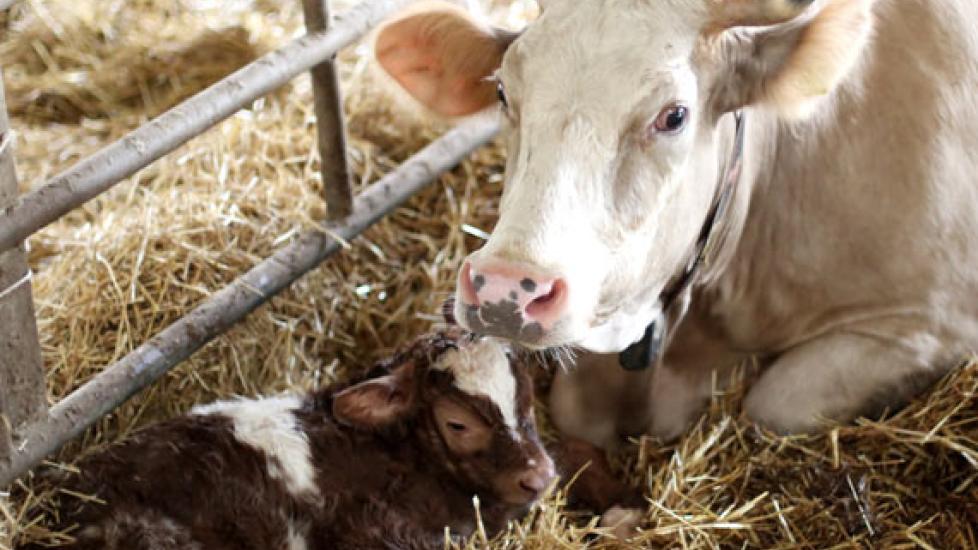What to Do When a Uterus Twists During Labor
You’ll have to pardon all the reproductive-centric blogs recently, but in the spring, that’s pretty much all we large animal veterinarians think about. We suddenly become OBGYNs to a handful of various species and, honestly, anything can happen.
When you get called out to help with a calving, you just never know what you’re going to find. Oftentimes, what you find is simply a calf coming backwards, or a leg is stuck. You reach in, fix it, and out it comes. Other times, it’s more complicated. For example: What happens when a cow’s uterus is twisted? Read on to find out more.
Uterine torsions are not uncommon in cattle, with estimates citing uterine torsion as 3-10 percent of calving problems in some dairy practices.
This problem most commonly occurs during the first stage of labor. The uterus flips over on itself, causing a twist at the junction between uterus and cervix. Obviously, this is a huge problem, as a twist right before entry into the birth canal will not allow the calf to be delivered.
What business does a uterus even have flipping all over the place? Good question. We don’t really know, but experts suspect it has to do with the lack of attachments of the uterus to the body wall.
There are two really strong ligaments, called the broad ligaments, which supply most of the support and stability to the uterus. During the final trimester, this uterus, which is carrying upwards of a one hundred pound calf and fluid, mind you, is enormous and mostly rests along the bottom of the abdominal cavity, softly snuggled between the rumen and intestines. If a cow were to stand up abruptly, fall, get pushed by another cow, or have some other sudden movement, there’s a possibility this uterus could gain enough momentum to swing around its longitudinal axis and cause problems.
Your first clue that a cow has a uterine torsion is the fact that she hasn’t progressed into the second stage of labor, which is where she lies down, actively pushes, the calf enters the birth canal, and then you see feet. During a vaginal exam, you won’t be able to extend your arm into the dilated cervix and touch the fetus. Instead, you’ll feel a corkscrew where the uterus is twisted and has pulled the cervix into a spiral.
Logically, the way to correct a uterine torsion is to un-twist it. However, this is easier said than done. The simplest way to fix a torsion is to lay the cow on the ground and roll her over. This doesn’t always work and you have to be careful not to roll her the wrong way!
Logistically, sometimes there just isn’t enough room to do this on the farm or you don’t have enough help. Rolling a 1,700-pound, fully pregnant Holstein is no easy feat.
There is also a tool called a detorsion rod. If you can reach the calf’s feet through the twisted cervix, which you sometimes can depending on how tightly twisted it is, you can attach chains to the feet and use this small metal contraption to start swinging the uterus in a standing cow. With luck and skill, you can sometimes get the uterus to flip itself using this method.
If these methods fail or you are unable to do them, you now have to resort to a C-section. This way, you can deliver the calf and then, while you’re in there, de-twist the uterus from the inside. With the calf out, this isn’t too bad.
After all is said and done, you’re exhausted and filthy but hopefully have a live calf. And then you check your messages and find there are two more calvings waiting for your help! The fun sometimes never seems to stop in the spring.

Dr. Anna O’Brien
Image: ChiccoDodiFC / Shutterstock
